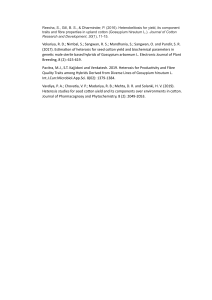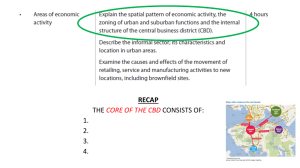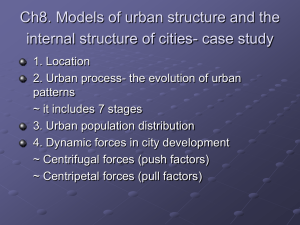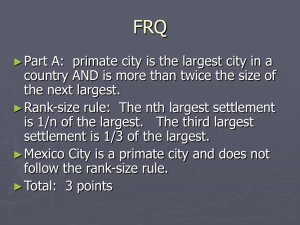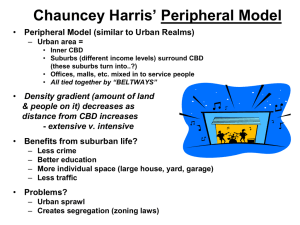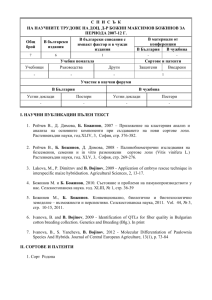Functional genomics analysis in an N-end rule protein
advertisement
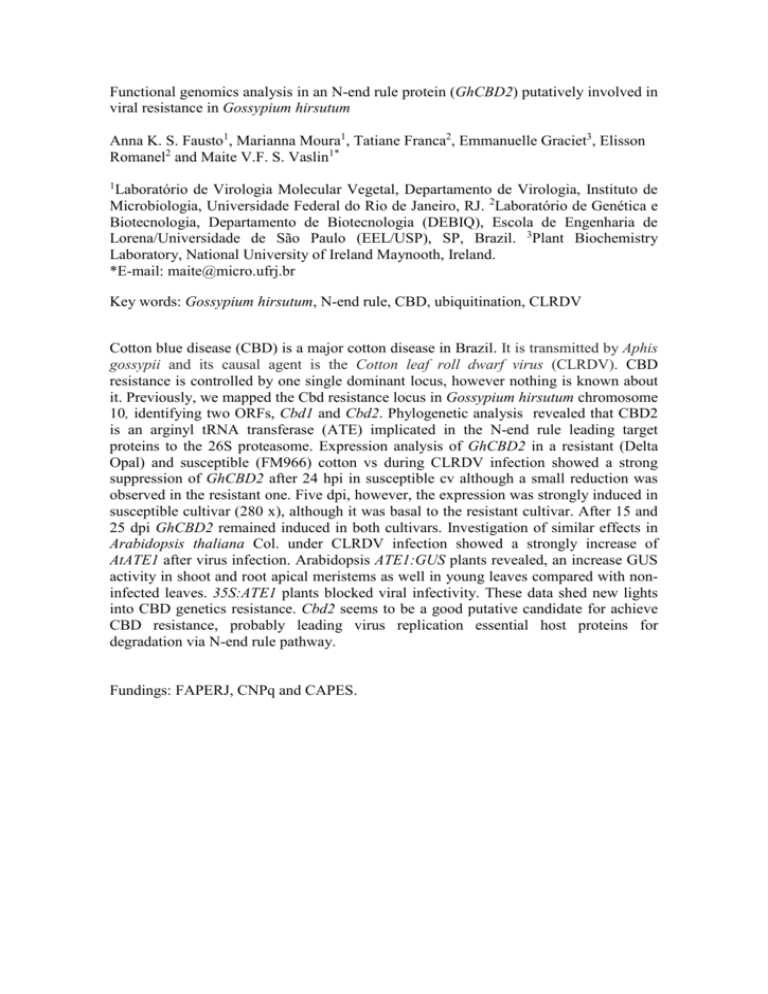
Functional genomics analysis in an N-end rule protein (GhCBD2) putatively involved in viral resistance in Gossypium hirsutum Anna K. S. Fausto1, Marianna Moura1, Tatiane Franca2, Emmanuelle Graciet3, Elisson Romanel2 and Maite V.F. S. Vaslin1* 1 Laboratório de Virologia Molecular Vegetal, Departamento de Virologia, Instituto de Microbiologia, Universidade Federal do Rio de Janeiro, RJ. 2Laboratório de Genética e Biotecnologia, Departamento de Biotecnologia (DEBIQ), Escola de Engenharia de Lorena/Universidade de São Paulo (EEL/USP), SP, Brazil. 3Plant Biochemistry Laboratory, National University of Ireland Maynooth, Ireland. *E-mail: maite@micro.ufrj.br Key words: Gossypium hirsutum, N-end rule, CBD, ubiquitination, CLRDV Cotton blue disease (CBD) is a major cotton disease in Brazil. It is transmitted by Aphis gossypii and its causal agent is the Cotton leaf roll dwarf virus (CLRDV). CBD resistance is controlled by one single dominant locus, however nothing is known about it. Previously, we mapped the Cbd resistance locus in Gossypium hirsutum chromosome 10, identifying two ORFs, Cbd1 and Cbd2. Phylogenetic analysis revealed that CBD2 is an arginyl tRNA transferase (ATE) implicated in the N-end rule leading target proteins to the 26S proteasome. Expression analysis of GhCBD2 in a resistant (Delta Opal) and susceptible (FM966) cotton vs during CLRDV infection showed a strong suppression of GhCBD2 after 24 hpi in susceptible cv although a small reduction was observed in the resistant one. Five dpi, however, the expression was strongly induced in susceptible cultivar (280 x), although it was basal to the resistant cultivar. After 15 and 25 dpi GhCBD2 remained induced in both cultivars. Investigation of similar effects in Arabidopsis thaliana Col. under CLRDV infection showed a strongly increase of AtATE1 after virus infection. Arabidopsis ATE1:GUS plants revealed, an increase GUS activity in shoot and root apical meristems as well in young leaves compared with noninfected leaves. 35S:ATE1 plants blocked viral infectivity. These data shed new lights into CBD genetics resistance. Cbd2 seems to be a good putative candidate for achieve CBD resistance, probably leading virus replication essential host proteins for degradation via N-end rule pathway. Fundings: FAPERJ, CNPq and CAPES.
